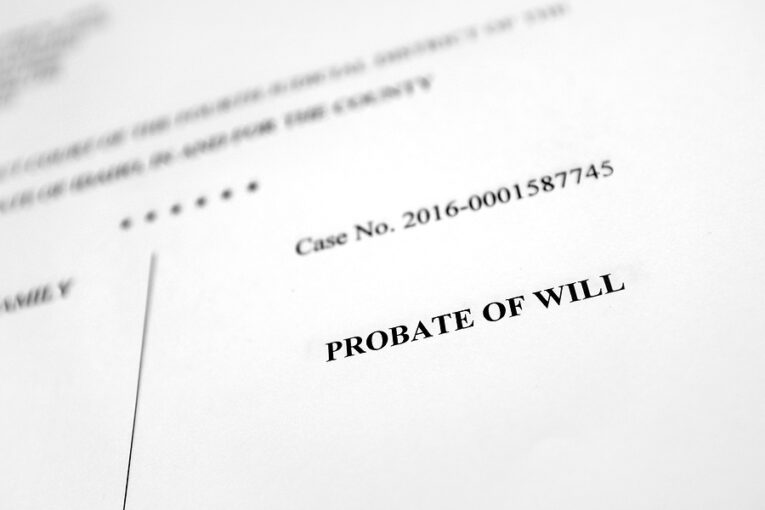When creating an estate plan, one of the most important considerations is whether your assets will pass through probate or directly to your heirs. Knowing the difference can have major implications for how smoothly your estate is settled after your death. This guide covers key aspects all individuals and families should understand about probate vs non-probate property.
What Are Probate Assets?
Probate assets refer to any possessions owned solely in the deceased’s name at the time of death that lack designated beneficiaries. Typical probate assets include:
- Real estate
- vehicles
- bank accounts
- investments
- personal possessions
- proceeds from a will or trust
Any asset that does not have a co-owner, joint tenant, or named beneficiary must go through probate, the court-supervised process for administering someone’s estate after they die.
Examples of Common Probate Assets
Below are some of the most frequent types of probate property:
- Real estate property: houses, condominiums, land.
- Vehicles: cars, trucks, motorcycles, boats.
- Bank accounts: checking, savings accounts without payable-on-death beneficiaries.
- Investments: stocks and bonds not held in a trust.
- Personal possessions: jewelry, furniture, art.
- Proceeds from a will or trust: assets passing through testamentary instruments.
If any of the above assets are solely owned with no joint owner or beneficiary designation, they would require probate after the owner dies to transfer legal title.
The Probate Court Process
The probate process begins by opening an estate with the probate court in the county where the deceased resided. An executor named in the will or an administrator, if there is no will, is officially appointed by the court as a personal representative to oversee the process.
The personal representative must create a probate estate inventory, provide notice to all heirs, manage the estate assets, and make an accounting of transactions for the court. Creditors can file claims against the estate, which must be resolved before final distribution. Finally, the remaining probate assets are distributed according to the will or by state intestacy law if there is no will. Probate procedures ensure assets transfer properly according to the deceased’s intent. The process can take over a year in some cases, given the required filings and hearings.
What are non-probate assets?
In contrast to probate assets, non-probate assets involve special transfer procedures that allow them to pass directly to the intended recipients without court proceedings. Typical non-probate assets have these characteristics:
- Joint tenancy registration
- Named beneficiaries
- Transfer-on-death provisions
Non-probate mechanisms specify who the owner wants to receive the property, so court validation is unnecessary. This also enables faster, more private transfers than probate.
Examples of Common Non-Probate Assets
Below are some of the most common forms of non-probate property:
- Joint bank accounts: accounts owned together with automatic right of survivorship.
- Life insurance policies with properly designated beneficiaries.
- Retirement accounts, like 401(k)s and IRAs, have named beneficiaries.
- “Payable on death” bank accounts: bank accounts with P.O.D. beneficiaries.
- Living trusts are accounts held and transferred by an established trust.
- Real estate: with joint tenancy registration or transfer-on-death deed.
If bank accounts, life insurance policies, or other assets have correctly designated beneficiaries, they bypass probate and transfer extrajudicially.
How Non-Probate Assets Transfer
The mechanisms used for non-probate asset transfers depend on the type:
Joint bank accounts automatically pass to the surviving co-owner. Life insurance policies directly pay proceeds to the named beneficiaries. Retirement accounts transfer directly to primary and contingent account beneficiaries. Payable-on-death bank accounts distribute funds to P.O.D. designees. Assets held in living trusts follow the succession guidelines in the trust documents. Real estate with rights of survivorship conveys automatically to the joint tenant owners. Transfer-on-death listed beneficiaries on a deed receive the property without probate.
Non-probate transfers happen privately and are much quicker than probate assets. However, improperly designated beneficiaries can still result in court proceedings.
Impact on Estate Planning
Estate planning strategies use tools like living trusts and beneficiary designations specifically to avoid assets passing through probate. This saves substantial time, delays, and legal costs in settling the estate. Keeping property out of probate also avoids court scrutiny of assets and preserves privacy for the family. And it allows for precise distribution instructions rather than simply relying on wills and state laws.
Key Differences in Handling Probate vs Non-Probate Assets
There are distinct legal differences in how probate and non-probate assets are handled:
| Probate Assets | Non-Probate Assets |
| Court validation required | Out-of-court transfer |
| Public records and accountings | Private distribution |
| Creditors can file claims | Creditors cannot access |
| 12+ months to settle | Typically, immediate transfer |
| Administration expenses | No court costs |
Table 1: Comparison of probate vs non-probate assets
The extra court validation introduces costs and delays with probate assets. Non-probate beneficiary mechanisms enable faster and more private transfer.
Common Misconceptions About Probate
There are some persistent myths about probate and non-probate assets:
| Myth | Fact |
| Probate only applies to individuals without a will | Probate happens whether or not there is a valid will |
| All assets automatically go through probate | Many non-probate assets have special transfer procedures |
| Joint accounts with a spouse avoid probate | Accounts still typically enter probate unless designated otherwise |
| Probate is always a lengthy process | For smaller estates without complications, probate can be finalized in months |
Table 2: Clarifying common probate myths
Proper estate planning is essential, even with a will to stipulate non-probate transfers. Joint ownership does not, by itself, avoid probate. Techniques like living trusts integrated with beneficiary mechanisms provide the best protection.
Real-Life Examples of Probate vs Non-Probate Scenarios
Below are real-world examples highlighting the differences between probate and non-probate situations:
- A married couple owns their house and bank accounts jointly. However, the wife dies without life insurance beneficiaries specified. Though the house passes directly to the husband, the substantial life insurance payout must go through lengthy probate.
- A widow’s will leaves her home to her son and bank accounts to her daughter. However, the widow is the sole owner of all assets. So everything is subject to probate, including the house having to change title and bank funds tied up for over a year.
- A widower utilizes payable-on-death clauses, joint home ownership, and an updated living trust. At his death, the estate transfers instantly with minimal legal wrangling and court interference in his affairs.
These real-life cases illustrate the advantages of maximizing non-probate assets integrated with comprehensive estate planning. Doing so keeps family matters private and streamlines inheritance for beneficiaries.
Conclusion: Strategically Designate Your Assets
One of the most impactful elements of an effective estate plan is stipulating as many non-probate asset transfers as possible. This prevents losing time and money in the public probate process. Consulting with financial and legal experts is the best way to ensure your beneficiary designations, account registrations, and estate planning documents fully integrate and align with your legacy intentions.
Careful designation and coordination of retirement accounts, life insurance, bank accounts, real estate, and other assets for non-probate beneficiaries saves your loved ones from undue court proceedings. Just be certain to review designations regularly and update estate planning documents to avoid assets going through probate unintentionally. With proper strategy as part of an integrated estate plan, you can preserve privacy and wealth for heirs while simplifying their inheritance.
FAQs
Probate assets are possessions owned solely by the deceased without designated beneficiaries. These assets go through probate to ensure legal transfer of ownership, settle debts, and distribute assets according to the will or state law.
Non-probate assets have mechanisms like joint tenancy, named beneficiaries, or transfer-on-death provisions that allow them to bypass the court process and transfer directly to the designated recipients, ensuring faster and private distribution.
Common probate assets include solely owned real estate, vehicles, bank accounts without beneficiaries, and personal possessions. Non-probate assets include jointly owned bank accounts, life insurance policies with designated beneficiaries, retirement accounts, and assets held in a living trust.
The probate process involves the court appointing a personal representative, who inventories the estate, notifies heirs and creditors, manages assets, and resolves debts before distributing the remaining assets according to the will or state law. This process ensures compliance and fair distribution but can be lengthy and costly.
Designating non-probate assets helps avoid the lengthy and costly probate process, ensures privacy for the estate and heirs, and allows for quicker and direct transfer of assets to beneficiaries. This strategic planning simplifies the inheritance process and minimizes legal complications.





